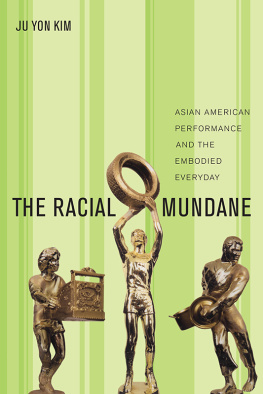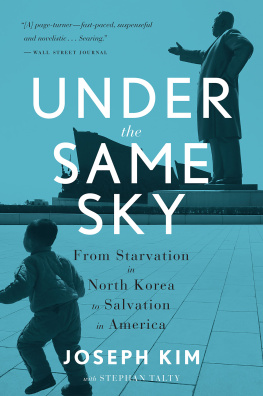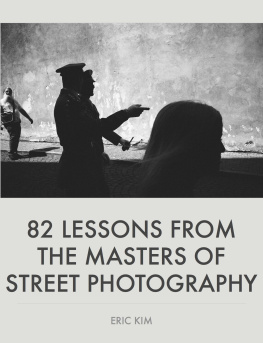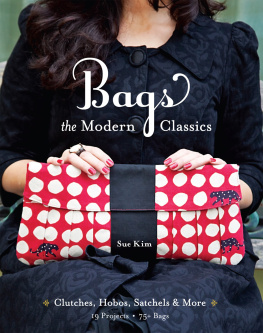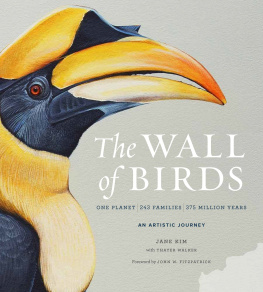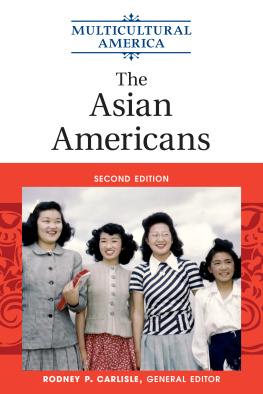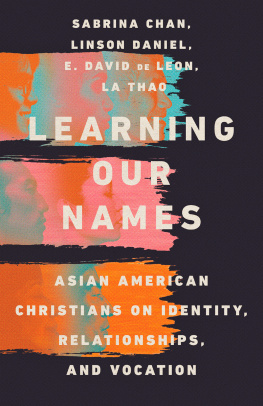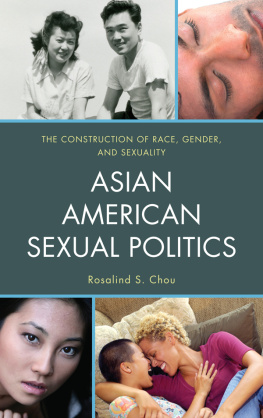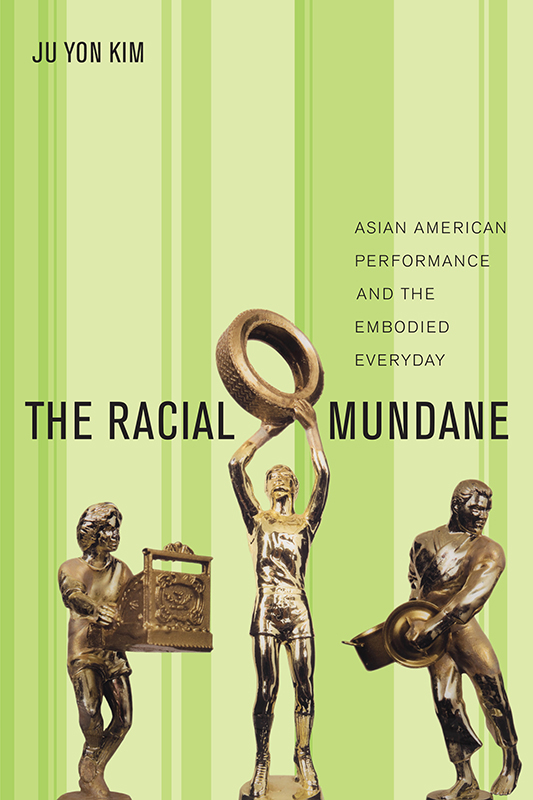References to Internet websites (URLs) were accurate at the time of writing. Neither the author nor New York University Press is responsible for URLs that may have expired or changed since the manuscript was prepared.
For Library of Congress Cataloging-in-Publication data, please contact the Library of Congress.
New York University Press books are printed on acid-free paper, and their binding materials are chosen for strength and durability. We strive to use environmentally responsible suppliers and materials to the greatest extent possible in publishing our books.
I was drawn to Maxine Hong Kingstons novel Tripmaster Monkey: His Fake Book as a frame for the introduction of this book because of its portrayal of the messy, dynamic community that forms around its protagonist, Wittman Ah Sing. Wittmans community occasionally disappoints and aggravates him, but it also propels him to create a unique theatrical experience. Like Wittman, I saw what I had envisioned as a solitary project become an exciting collective enterprise. I was fortunate enough, however, to write The Racial Mundane with the support of a community of friends, mentors, and colleagues who always inspired, and never disappointed.
David Palumbo-Liu and Harry Elam, Jr. have read and reread my scholarship, bringing out its best and challenging me to make it better; they have given me time without hesitation, even when time was short; and they have provided models of pedagogy and scholarly engagement to emulate. No words can adequately convey my appreciation. I owe immense thanks as well to Paula Moya for her astute feedback on my research and for her wise and discerning advice, both of which continue to influence how I approach my work. Gordon Chang, Shelley Fisher Fishkin, and Stephen Sohn provided invaluable support and counsel during my time at Stanford University. Cherre Moragas life-sustaining words, guidance, and faith in my writing have motivated me to seek ways to connect art, politics, and scholarship; my admiration and gratitude run deep.
The Modern Thought and Literature Program (MTL) and the Center for Comparative Studies in Race and Ethnicity (CCSRE) were important homes for me at Stanford. I am indebted to Monica Moore for the care with which she shepherded us through the Modern Thought and Literature Program; as many will concur, she is the heart of MTL. Celine Parreas Shimizu and Kyla Wazana Tompkins were departing the program as I was joining it, but they immediately became trusted mentors when our paths crossed several years later. At Celines suggestion, I spent an invigorating quarter as a lecturer at the University of California, Santa Barbara. Kyla generously advised me on this book, and her suggestions moved it in exactly the right direction. CCSRE supported my research with a teaching fellowship and gave me the opportunity to attend a range of talks on the latest scholarship in race and ethnic studies. The center is a testament to the vitality and importance of this research, and my year as a fellow was crucial to the development of this project. I am grateful as well to the Mellon Foundation for funding two years of study and research.
I found an incomparable community of friends and colleagues at Stanford. Sarah Richardson and Nirvana Tanoukhi, with their brilliance and loyalty, have encouraged me to be a better scholar and a better friend. My memories of San Francisco are filled with the many conversations and meals I had with Mike Benveniste and Karen Paik. I benefited from friendships with Harris Feinsod, Nigel Hatton, and Jayson Sae-Saue, who made me laugh and think. The women of my writing group, Allison Carruth, Heather Houser, Michael Hoyer, Ruth Kaplan, and Claire Seiler, have reviewed countless versions of the following pages, always with enthusiasm, and always with keen insights. They are my true collaborators in this project, which is all the more meaningful because of the traces of their queries, comments, and encouraging words that lie across it.
The English Department at Harvard University has been a stimulating and collegial place in which to develop my research. The book became bolder as well as more expansive and nuanced through conversations with colleagues who have been equally gracious and rigorous in their questions and suggestions. I am especially grateful to Stephen Burt, Glenda Carpio, Amanda Claybaugh, Marjorie Garber, Martin Puchner, James Simpson, Werner Sollors, and Nicholas Watson for their mentorship and engagement with my research. I thank Deans Diana Sorenson and Heather Lantz for ensuring that I had the support necessary to finish this book. I am appreciative as well of Caroline Elkins, Kay Shelemay, and Tessa Lowinske Desmond of the Committee on Ethnicity, Migration, Rights, and Sun Joo Kim and the Korea Institute for their steady support. Robin Bernstein has offered keen advice on our many shared research interests. The extraordinary peers I met my first few days at Harvard have remained my closest friends: Alex Bloemendal, Kerry Chance, Nicholas Harkness, Keerthi Madapusi, Emily Madapusi Pera, Laurence Ralph, and Emily Riehl have made Cambridge home.
The Everyday Life working session that Robin Bernstein and Kyla Wazana Tompkins began at the American Society for Theatre Research (ASTR) conference has been a key forum for exchanging scholarship on performance and the everyday, and I am thankful to all of the participants for their feedback on my papers. Esther Kim Lee and Ron Wests ASTR working session on Asian American theater was an important introduction into the field. I am grateful to Josephine Lee for her generous mentorship of emerging scholars, among her many contributions to the study of Asian American theater. I approached Karen Shimakawa several years ago about acting as an early reader for this project, and her feedback and support have been critical to its development, as well as my development as a scholar. Her insights have improved this book, and her confidence in my work has sustained me through its writing.
I completed work on The Racial Mundane while I was a visiting scholar at the American Academy of Arts and Sciences. The fellowship enabled me to finish revisions while beginning a second book project. I am grateful to John Tessitore and Hilary Dobel for their support of the fellows, and to Mary Dunn and Patricia Spacks for their perceptive questions about my research and offers to read my works in progress. For many lively conversations, I thank the other fellows at the academy: Kornel Chang, Jillian Hess, Heather Houser, Gretchen Purser, Crystal Sanders, Stephen Tardif, Colin Williamson, and Bernardo Zacka.
I cannot imagine a better experience working with a publisher than the one I have had with NYU Press. Eric Zinner has been an ideal editor, offering input and latitude at exactly the right points. I owe many thanks to Alicia Nadkarni and Dorothea Halliday for ushering the manuscript from review to production. Two anonymous reviewers provided thorough, subtle assessments of the manuscript that helped elevate the book. I am deeply appreciative of their careful reviews and suggestions. Portions of the manuscript previously appeared in

